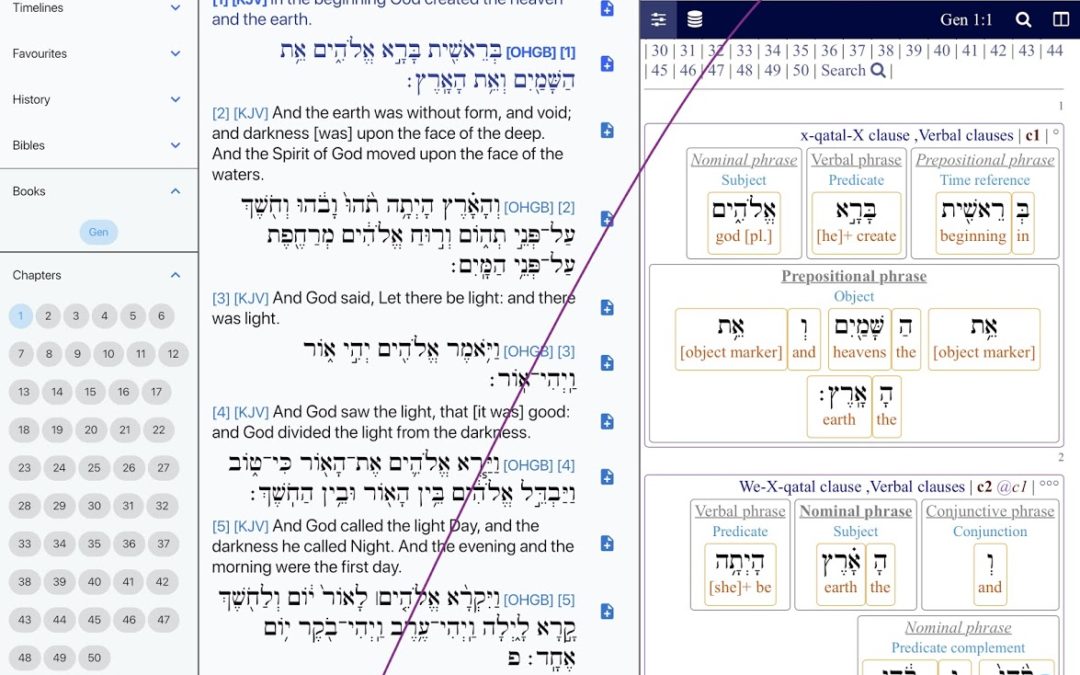
by Willem van Peursen | Jan 27, 2021 | Bible, Computational Linguistics, events, Hebrew Bible, Open Science, Text-Fabric, Uncategorized
In the next months we will have an exciting schedule of research meetings and presentations. All will meetings will be online. For Zoom meetings send a request Prof. Wido van Peursen Thursday 4 Feb 2021 11.00–13.00 CET Wido van Peursen Digital Approaches to the Old...

by Willem van Peursen | Jul 2, 2020 | Bible, Computational Linguistics, Database, events, Hebrew Bible, Hebrew Learning, linguistics, Translation
(And why you should follow the new online minor programme in Bible Translation at Vrije Universiteit Amsterdam) By Lourens de Vries The Hebrew conjunction we in The Song of Solomon (1:5) can be rendered by “and” or “but” and translations have gone both ways. What’s a...

by Eliran Wong | Oct 30, 2019 | Bible, Database, Hebrew Bible, Hebrew Learning, Open Science, Uncategorized
It was my pleasure to give a brief overview of BibleBento.com on the 40th anniversary of the ETCBC. I would like to share a little bit more here, including progress of the development since the presentation. I am a full-time church minister. I like collecting Bible...






